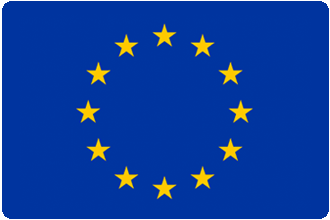Germanium (Ge) is a chemical element with the atomic number 32. It is a silvery-grey-white, brittle metalloid that shares several chemical and physical properties with silicon. Its diamond-like crystalline structure and unique optical characteristics make it highly valuable in a variety of scientific and industrial applications.
UQG Optics Germanium Windows are available coated and uncoated in a variety of stock diameters and thicknesses, as well as custom specifications.
Key Properties of Germanium
Germanium is renowned for its excellent transmission in the infrared (IR) spectrum, particularly between the 2 and 14 µm waveband. This property renders it an optimal material for use in IR optics, encompassing lenses and windows employed in thermal imaging systems and infrared spectroscopes.
However, it is important to note that germanium’s optical transmission decreases with increasing temperature. Significant transmission degradation starts around 100°C, with rapid degradation occurring between 200 and 300°C, which can lead to catastrophic failure of the optic.
Additionally, germanium’s high refractive index (approximately 4.0 in the infrared range) necessitates the use of anti-reflective coatings in numerous optical applications to mitigate surface reflections and enhance transmission. Common coatings include diamond-like carbon (DLC), which not only improves transmission but also adds a hard, protective layer suitable for rugged environments.
Applications of Germanium
Due to its transparency in the infrared spectrum, germanium is extensively utilised in the fabrication of spherical lenses and windows for high-efficiency infrared spectroscopes and thermal imaging systems. Specific applications include:
- Aerospace: Germanium is used in satellite imagery sensors and other aerospace instrumentation requiring precise IR detection
- Medical Diagnostics: the material is employed in various diagnostic devices that rely on infrared technology
- Industrial Manufacturing: Germanium is utilised in a range of infrared applications, including thermal imaging for process monitoring and quality control.
Germanium Windows from UQG Optics
UQG Optics offers germanium windows and plates with excellent transmission across the 2–14 µm waveband, suitable for both mid-wave infrared (MWIR) and long-wave infrared (LWIR) systems. These high-density windows are available in various forms:
- Uncoated: Standard germanium windows without additional coatings
- AR Coated: Anti-reflective coatings applied to both sides to enhance transmission and reduce surface reflections
- AR/DLC Coated: Combines anti-reflective properties with a diamond-like carbon coating, providing a hard, durable surface suitable for harsh environments.
Should you have a particular application in mind, we offer custom Germanium windows and plates, including a variety of shapes (squares and rectangles), sizes and material specifications, to exactly meet your needs.
Germanium Transmission and Other Considerations
Germanium offers excellent infrared transmission and is highly valued in optical applications, but certain factors must be considered:
- Temperature Sensitivity: Germanium’s transmission properties are known to degrade at elevated temperatures. Significant degradation occurs at around 100°C and rapid degradation at temperatures between 200 and 300°C
- High Density: Germanium has a density of approximately 5.323 g/cm³. This makes it relatively heavy compared to other IR-transmitting materials. This must be considered in weight-sensitive applications
- Refractive Index: The high refractive index (~4.0) demands precise optical design and often requires the application of anti-reflective coatings to achieve the desired performance.
Did You Know?
Germanium was first discovered by the German chemist Clemens Winkler (1838–1904) in 1886. Winkler worked at what is now the Freiberg University of Mining and Technology and was asked by a colleague to analyse an unusual new mineral which had been found in a nearby mine.
Winkler’s first analysis found the mineral’s composition to be 75% silver and 18% sulphur, but he could not identify the remaining 7%.
He realised he had a new metal-like element on his hands and correctly placed it as the element below silicon in the periodic table. Winkler named the new element ‘germanium’ after the Latin name for Germany, ‘Germania’.
Germanium was first used on a large scale to replace one of the most basic electronic components, the diode.
Next Steps
To find out more about our stock Germanium Windows or to discuss your custom requirements, call us on 01223 420329 or email our sales team at info@uqgoptics.com.




